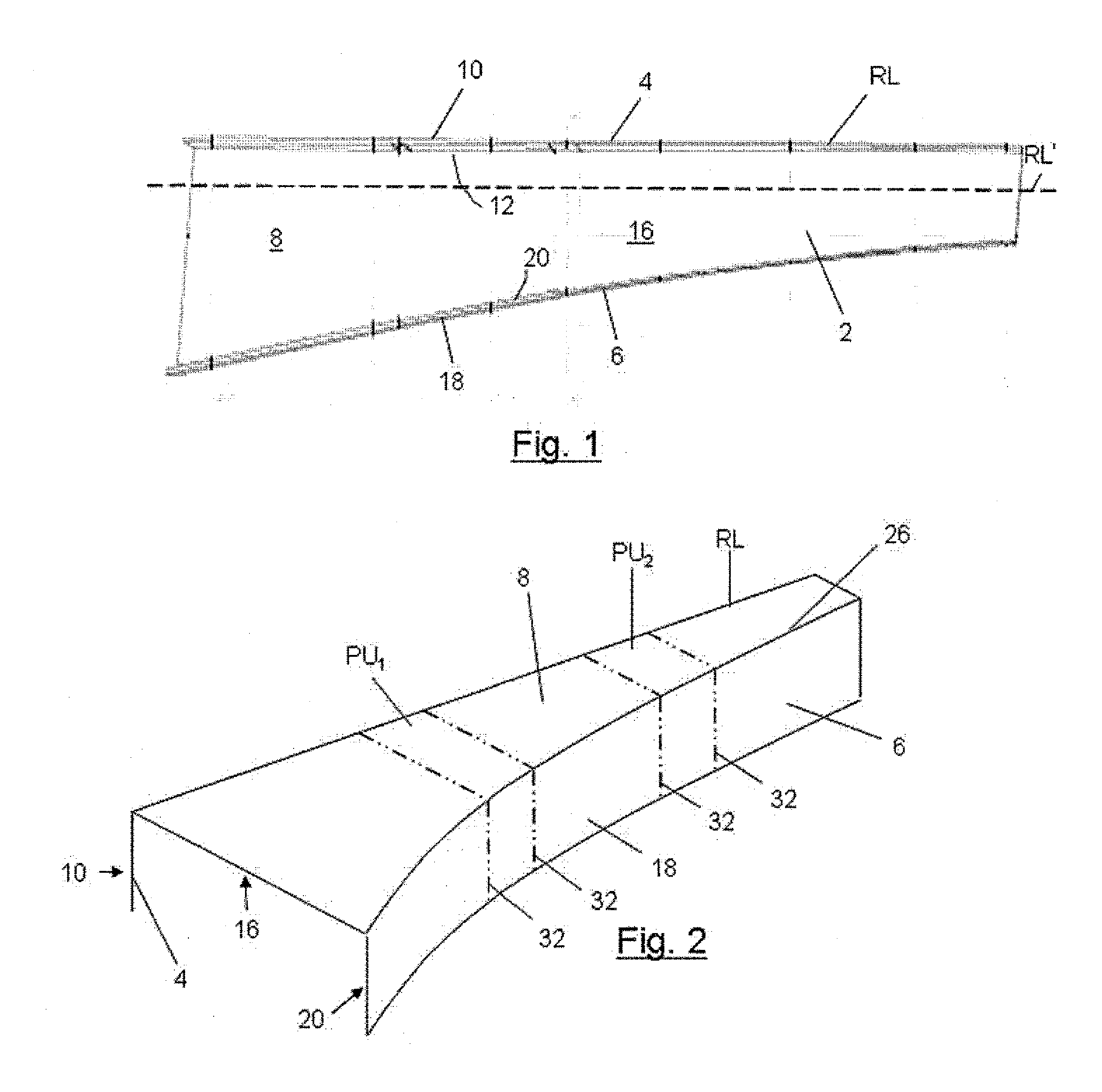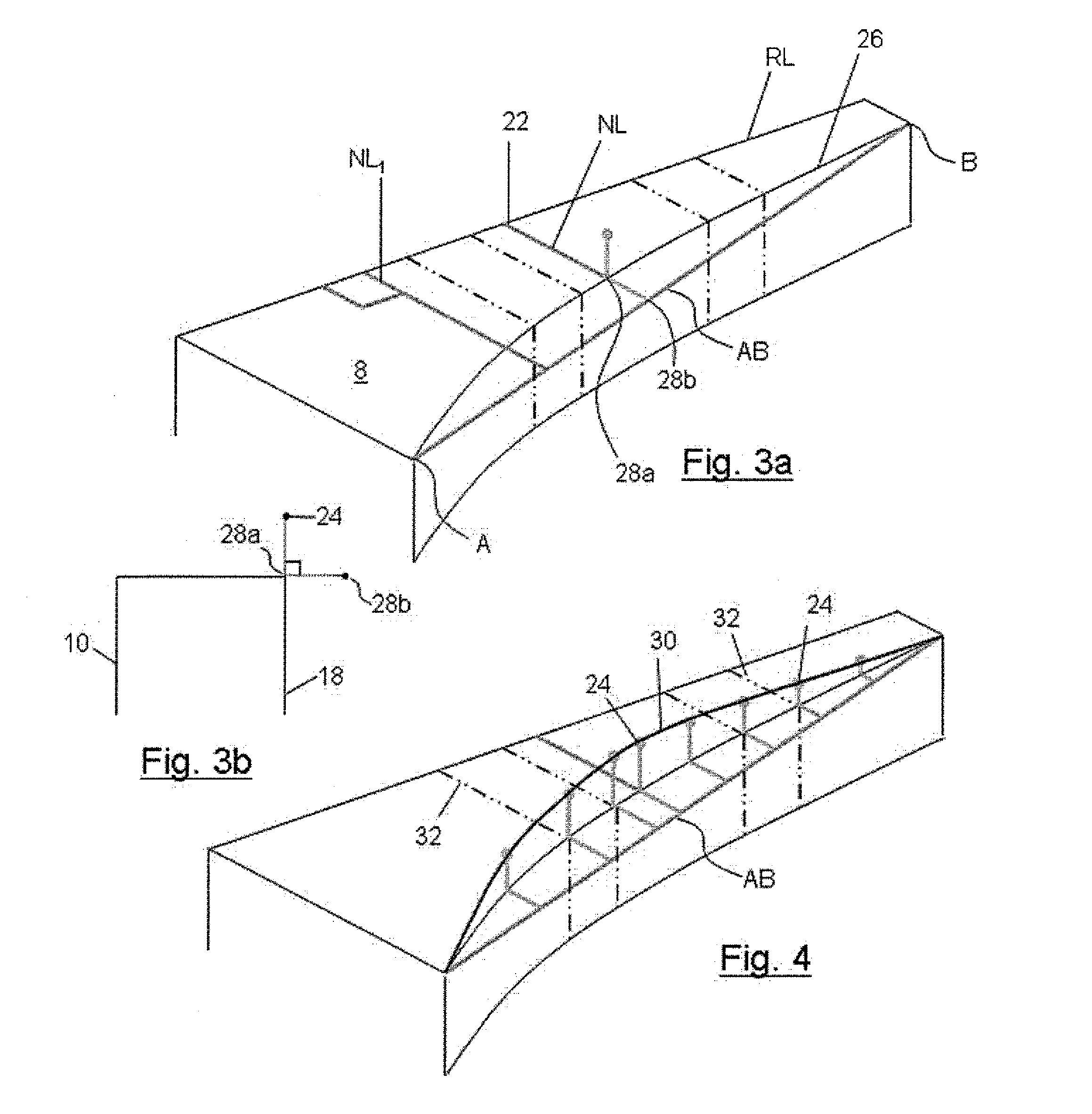Elongate composite structural members and improvements therein
a composite structural member and elongation technology, applied in the field of composite material structure, can solve the problems of complex desired shape of structural member for use when stiffening a panel, pad-up in the panel, and increase the risk of defects, so as to reduce the risk of deviation.
- Summary
- Abstract
- Description
- Claims
- Application Information
AI Technical Summary
Benefits of technology
Problems solved by technology
Method used
Image
Examples
first embodiment
[0058]The geometry of the spar 2 is shown in FIG. 1 is designed in accordance with a method illustrated by FIGS. 2 to 11b. The method of the invention generates a geometry of spar such that:[0059](1) the first surface 10 on the upper flange 4 has a geometry that matches and corresponds to the desired geometry of the wing skin at the interface between the spar and the upper wing skin;[0060](2) the fifth surface 18 on the lower flange 6 has a geometry that matches and corresponds to the desired geometry of the wing skin at the interface between the spar and the lower wing skin; and[0061](3) the geometry of the first, third and fifth surfaces of the spar is such that its developed form is effectively a two-dimensional plane.
[0062]By ensuring that the developed form of the component is a 2-D plane, it enables the layers of fibre mats that are laid up during the hot drape forming process to be folded and manipulated to adapt to the desired geometry of the spar as defined by the inner and...
third embodiment
[0082]FIGS. 13a to 13d illustrate schematically a spar accordingly to the present invention. The spar 102 is made from layers of fibre material embedded in a resin matrix, the outer layer of which being shown in FIG. 13a in schematic form. Whilst there are well defined edges and boundaries in the layer shown in FIG. 13a it will be appreciated that it is not easy to form such sharp edges by means of layers of composite material. In reality there would typically be no sharp edges to the shape of the spar and instead there are smooth radii between transitions of one gradient and a different gradient. The layer shown in FIG. 13a has a first surface 110 being shaped to abut a wing panel and a second surface (not shown in FIG. 13a) opposite the first surface and being on the same (lower) flange 106. The spar also includes a web 108 which extends from the lower flange 106. On the web 108 there is defined a third surface 114 which is at the same layer in the composite material as the first ...
PUM
| Property | Measurement | Unit |
|---|---|---|
| angle | aaaaa | aaaaa |
| length | aaaaa | aaaaa |
| shape | aaaaa | aaaaa |
Abstract
Description
Claims
Application Information
 Login to View More
Login to View More - R&D
- Intellectual Property
- Life Sciences
- Materials
- Tech Scout
- Unparalleled Data Quality
- Higher Quality Content
- 60% Fewer Hallucinations
Browse by: Latest US Patents, China's latest patents, Technical Efficacy Thesaurus, Application Domain, Technology Topic, Popular Technical Reports.
© 2025 PatSnap. All rights reserved.Legal|Privacy policy|Modern Slavery Act Transparency Statement|Sitemap|About US| Contact US: help@patsnap.com



